We recently returned from an almost 4,000 km drive around the Gaspe Peninsula of Quebec. It was a wonderful trip for many reasons, including that my parents joined us and we were able to visit my Dad’s parents homestead in the little town of New Richmond on the south side of the peninsula. Prior to my grandparents moving to Oshawa in the 1920’s, there were five generations of Martin’s in the Black Cape/New Richmond area of the Gaspe Peninsula.
Undoubtably, one of the high points of the vacation was seeing Minke and Humpback Whales while whale watching out in the rough waters of Gaspe Bay and the Gulf of St. Lawrence. Our boat, the Narval III was operated by Croisieres Baie de Gaspe leaving from Grande-Grave harbour within Forillon National Park, Quebec’s first National park, located at the Eastern tip of the Gaspe Peninsula.
As you can see the Narval III is a beautiful boat for whale watching.
This next shot with the smaller red zodiac on the left gives some perspective as to the size of the Narval III.
We had reserved our spots on the boat a number of weeks before arriving, however because of the rough seas and high winds, we were forewarned that it would be a rough almost three hours on the boat and that we would get completely soaked. Deb & my mom were wise in their decision to stay on shore, but my Dad and I donned the complementary rain gear and climbed aboard. Not knowing anything about whale observation and given the rough seas, I was pretty much convinced we wouldn’t see any whales, however only a few minutes into the voyage we saw some Minke whales, which are the second smallest of the baleen whales (more on baleen whales in a minute). The average length of a Minke whale is 23 feet. It was such a thrill to see even a ‘small’ whale that the trip was already a success, but only a short while later we found a pair of Humpback Whales and I was amazed at how close they would come to the boat as we watched and followed them for the next hour or so.
Here is one of the first pictures I was able to capture of the Humpback Whale.
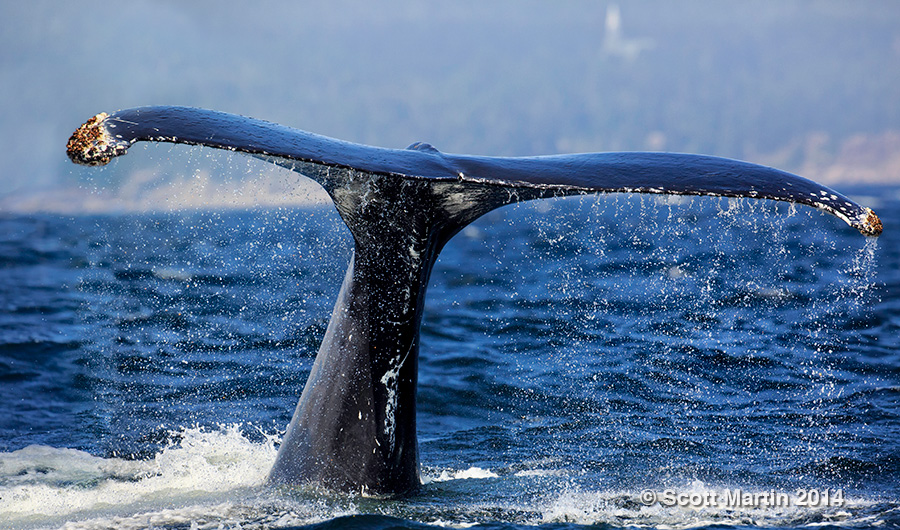
It is difficult, if not impossible, to describe effectively enough to provide someone else an appreciation for the sheer size of these whales. Humpbacks weigh in at about 40 tons (80,000 pounds) and can reach lengths of 62′, or larger than a transport truck, yet they are very graceful to observe in the water. The normal method of spotting whales is to look for the 10-15′ high water spout created when the whale surfaces to breath and forcibly exhales air through the blowhole before inhaling. This is an easy thing to spot under calm seas, but the high winds and ten foot swells made it much more difficult for us to observe the water spouts. After seeing a spout, the small dorsal fin would appear about twenty feet behind often followed by the fluke or tail, allowing for great photo opportunities. The following are a few of the results.
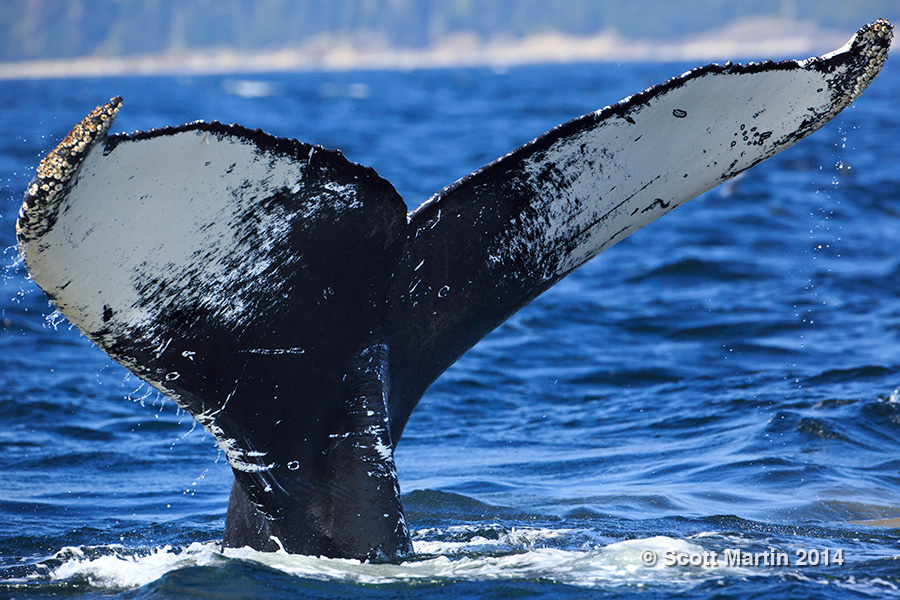
The underside of a Humpback tail has large white areas which are an identification distinction visible from quite far away.
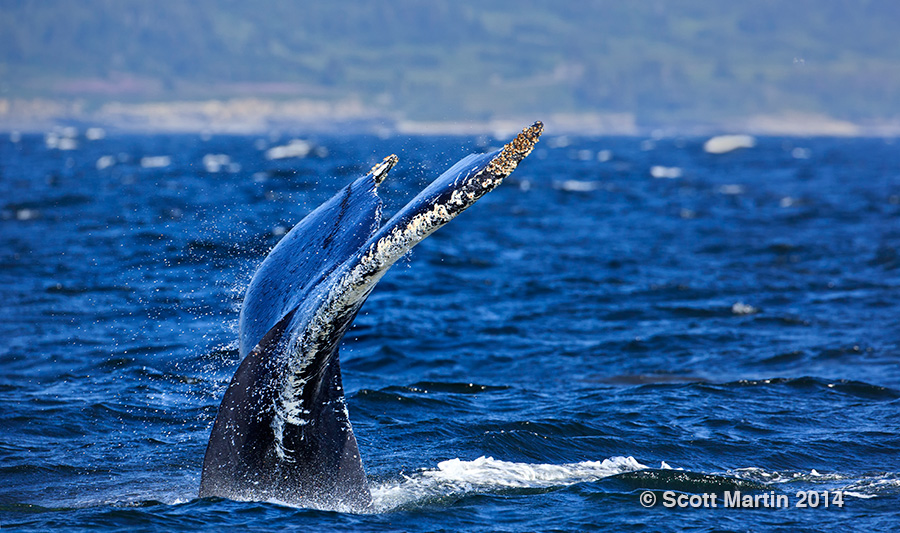
Humpback Whales are part of the baleen whale grouping. Baleen whales are edentulous, meaning they have no teeth, but instead have up to 400 baleen plates on both sides of their mouths. These plates are side by side, perpendicular to the roof of the mouth and can be up to 4′ in length. When the whale closes its mouth while feeding on a school of krill, the small fish are trapped between the baleen plates while the water is expelled. The food is then swallowed. Blue whales, the largest animals on the planet, are also baleen whales, thus the biggest whales in the world have no teeth, which is perhaps one of those little pieces of trivia you will never forget after reading this blog post!
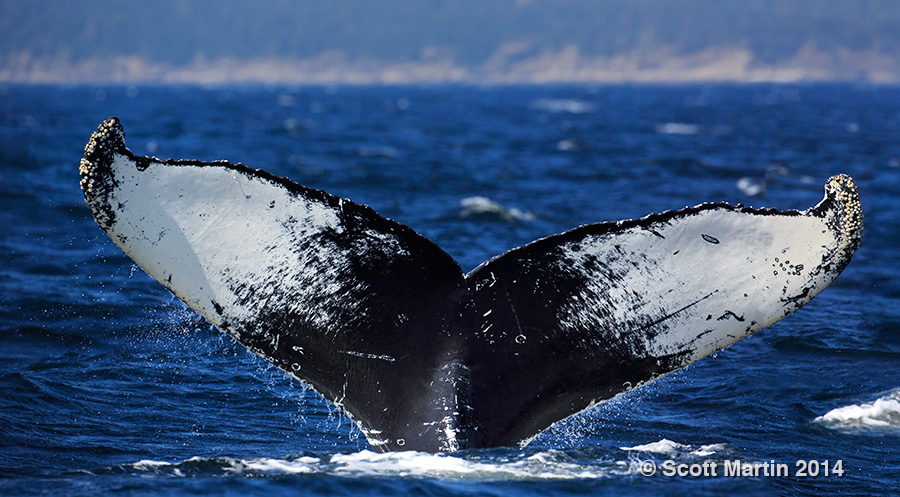
The Humpback Whale, like many whale species, was brought to the brink of extinction around the turn of the last century by over fishing and a hunting ban was implemented in 1966. Since then the population of the Humpback globally has slowly increased, however the National Geographic Association still lists the Humpback as endangered. It is estimated that there are 80,000 Humpbacks alive today.
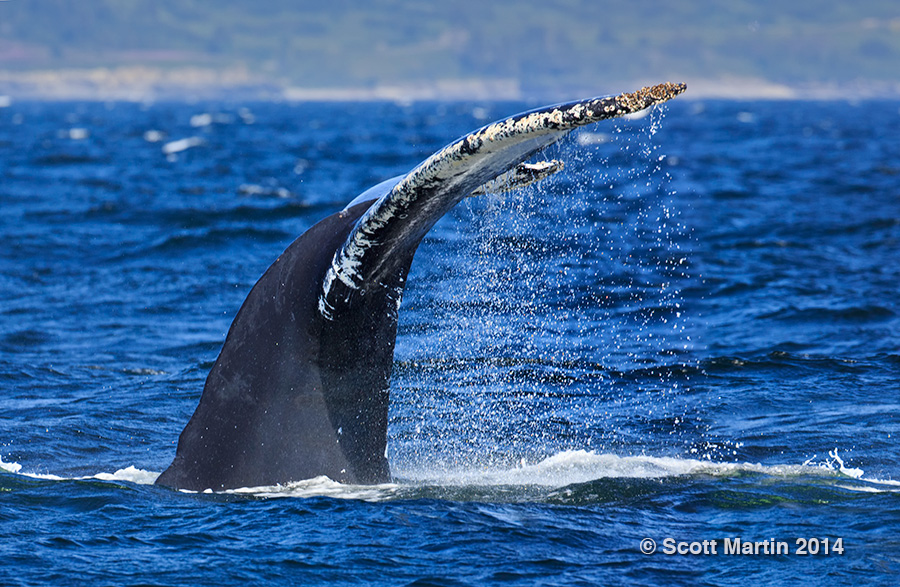
The Humpback Whale gets its name from the distinctive hump seen in its dorsal spine as it arches above the water when it surfaces to breath.
I was fortunate to capture a unique perspective of the dorsal spine of the Humpback Whale as it surfaced while swimming directly towards the boat. Only a small part of the whale is visible, but you can see how the humpback got its name.
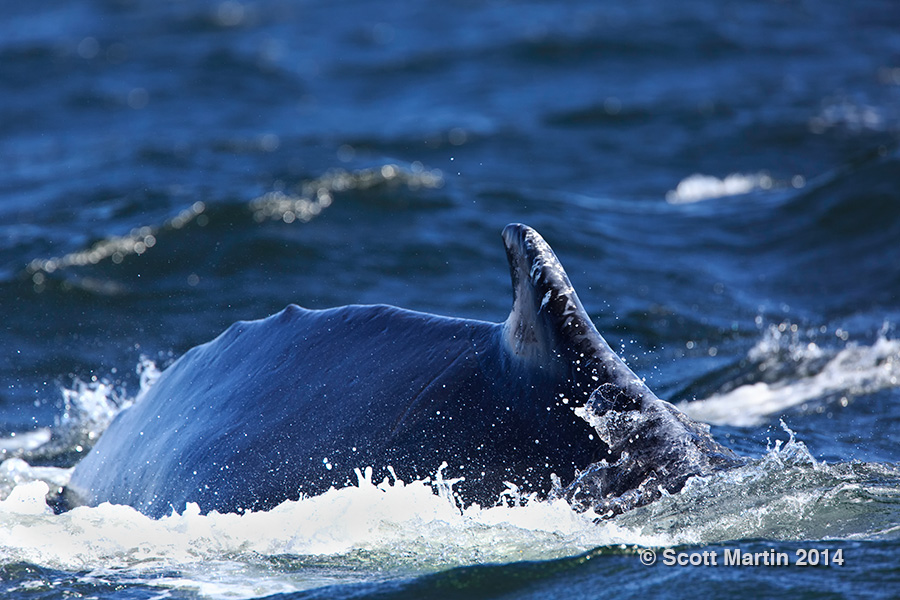
Humpback Whales are migratory animals that cover a lot of miles every year, in fact 16,000 miles on average. They summer in the cooler northern polar waters and head south in the winter to the tropical waters where they breed and give birth to their young. Interestingly they don’t eat while in the cooler waters in the summer and live of the fat reserves created by all the krill and small fish they consume in the winter months. Although they don’t eat in the summer, they continue to produce waste as this next image shows 🙂
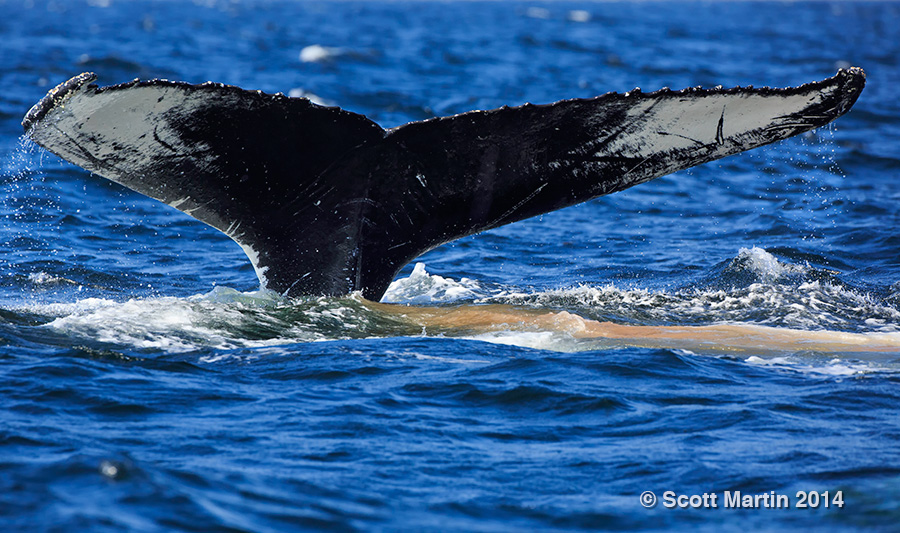
You won’t find this next pic in the gallery, but it is included here in an attempt to convey the relative size of an adult Humpback whale, using the rough waters of Gaspe Bay and the shoreline in the back ground to provide some scale. The width of the Humpback fluke can be up to one third of its length meaning the tail width can reach 15-20 feet or the length of most recreational motor boats.
I trust that you have enjoyed these Humpback Whale images and if you’ve never been whale watching, I would urge you to plan a trip to Forillon National Park and sign up for an excursion with Croisieres Baie de Gaspe. You will be amazed when you see up close one of the largest animals that God designed to roam our oceans.
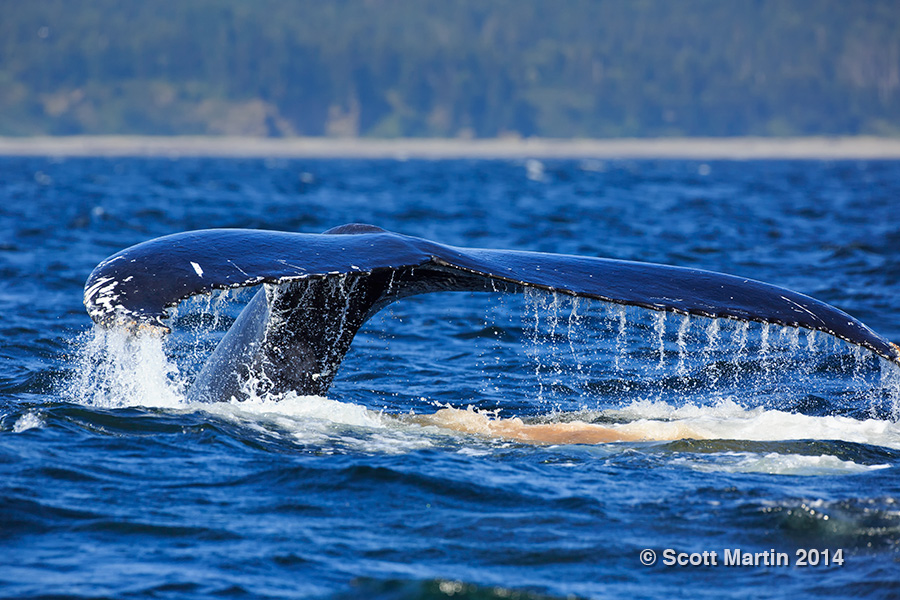
To see the above images in more detail, you can view them in the Wildlife Gallery.
As mentioned in the opening of this blog post, our whale watching excursion left from Grande-Grave Harbour in Forillon National Park. You could easily spend a few days exploring the park itself and admiring its many beautiful vistas overlooking the Gulf of St. Lawrence and Gaspe Bay. One of the most picturesque is Cape Bon Ami in the northern section of the park. The cliffs around the Cape provide nesting grounds for Black-legged Kittiwakes, Razor-billed Auks, Common Murre and Black Guillemots, which will be described in a future post. In the mean time here are some pictures of Cape Bon Ami and the surrounding area.
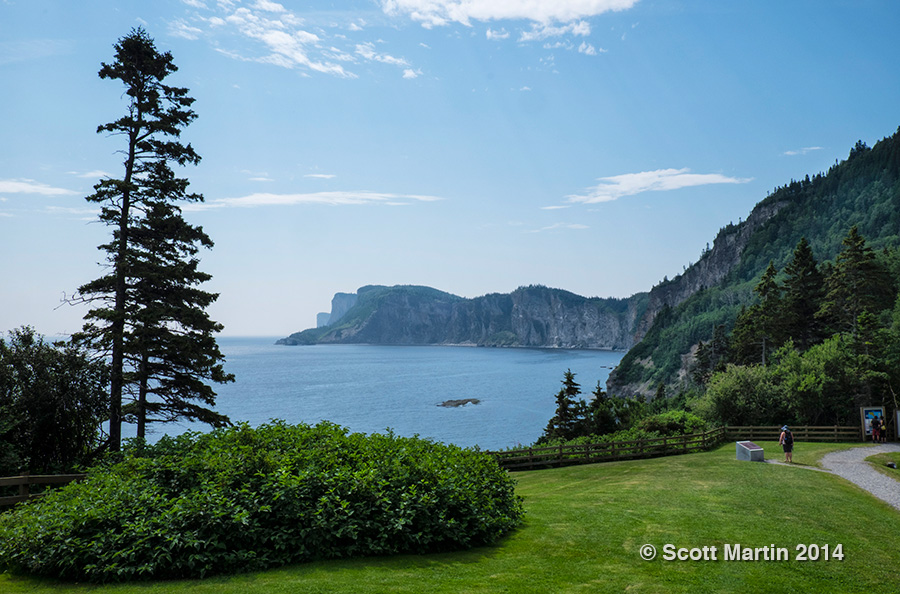
.
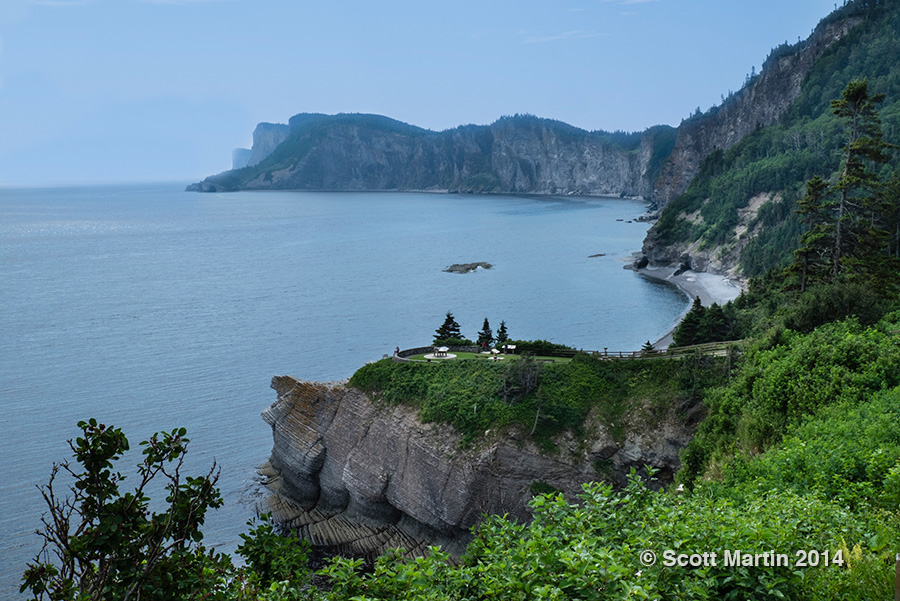
.
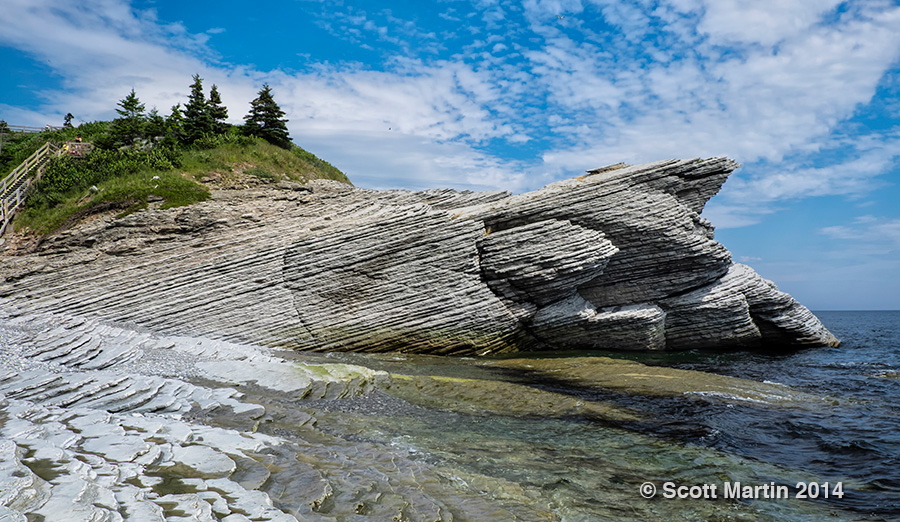
.
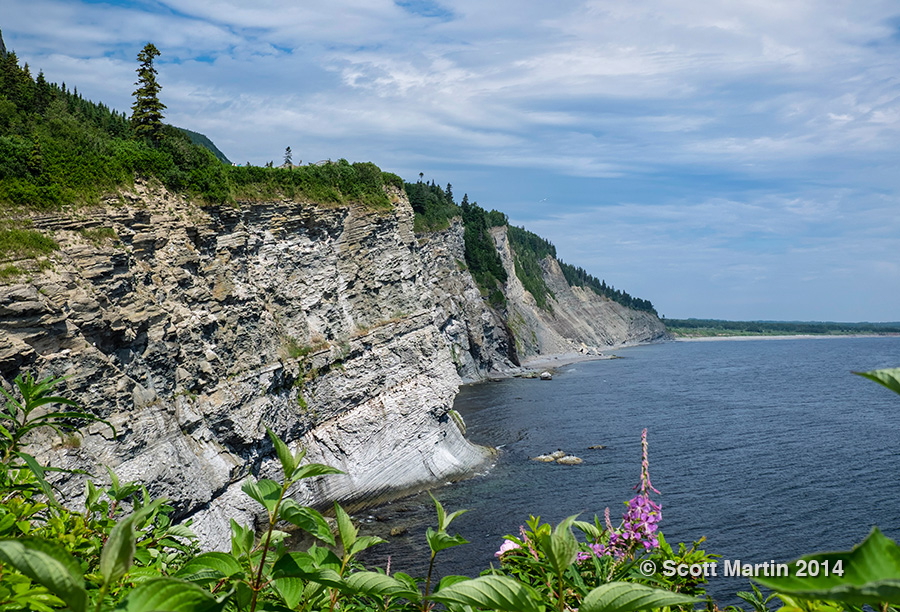
A number of other images from Forillon can be found in the Naturescapes Gallery.
The whale images in this post were all taken with a Canon 5D Mk III and 500 f/4 L lens while all other images were taken with a Fujifilm X-E2 and 18-55 zoom lens. Long time readers of this blog will recognize that this is a significant departure from a gear perspective, however I will talk about the new Fuji equipment in more detail in a future post.
One final note; if you would like to receive future blog posts via email, please enter your email address in the “Subscribe to Blog Via Email” box at the top of the right sidebar. By doing so, you will receive future blog posts via email as soon as they are published. Your email addresses will never be shared and your email subscription is easily managed.


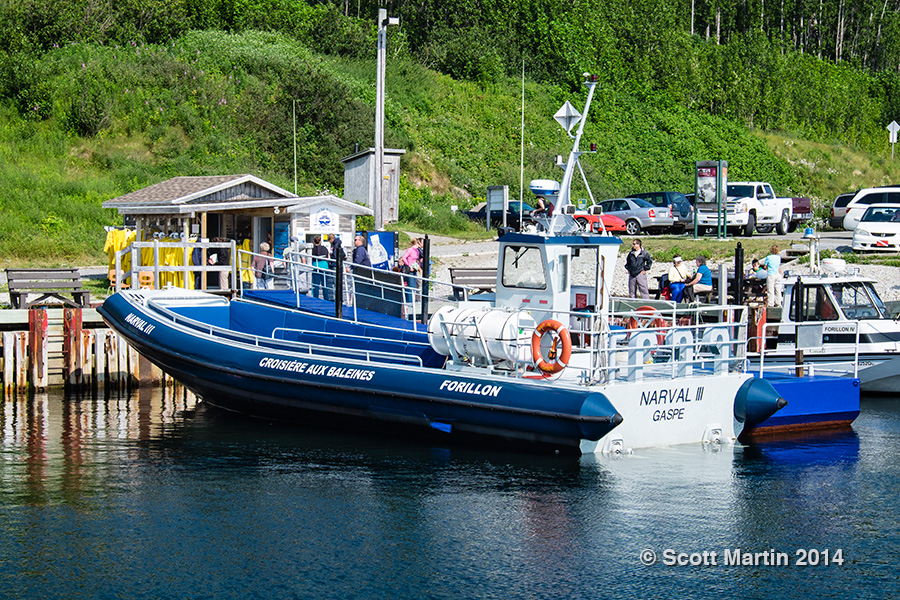
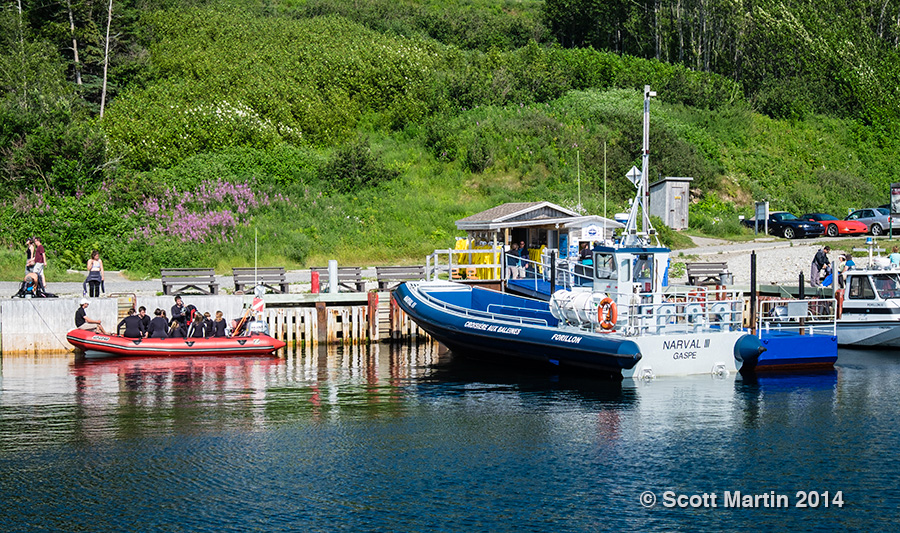
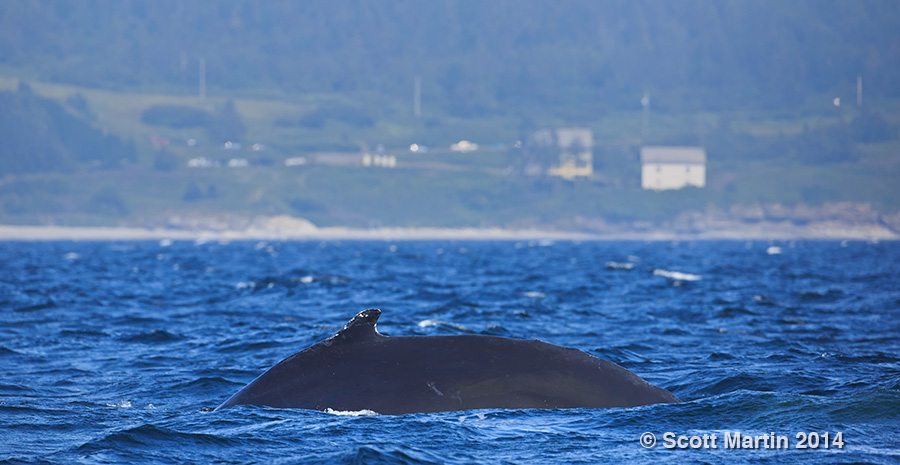
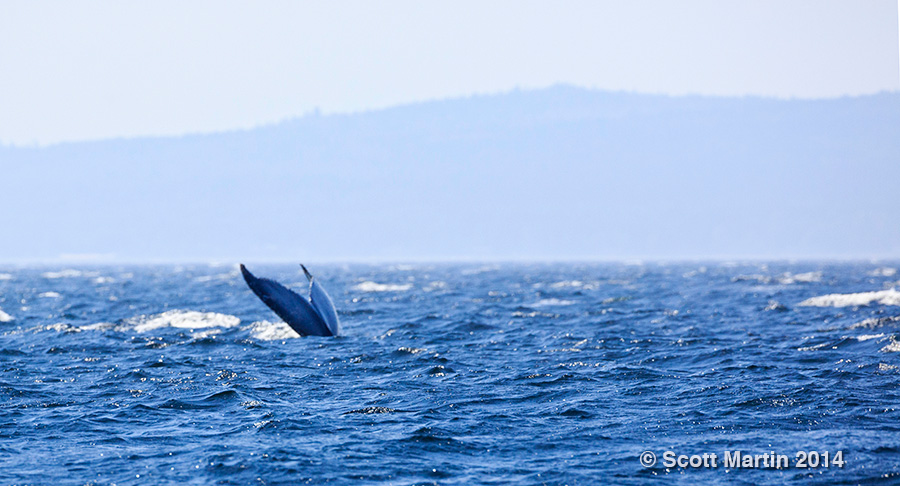
Scott, these pictures are truly amazing! Having been with you in the boat and experiencing the awesome spectacles, I am impressed not only with the shots you were able to capture, but also your ability to protect your camera from the constant spray/splash of salt water. Had I had my camera with me I would probably be looking for a new camera! This was certainly one of the many highlights of our trip with you and Deb.
Thanks Dad and it was a terrific experience that I’m glad we got to do together.
What a great post Scott. Amazing pictures as always and plenty of information to boot. I bet the highlight of the trip though was sharing with your Mom and Dad!
You are exactly right Arni, it was a wonderful vacation, especially with my parents sharing it with us.
Scott you have a great talent for catching some amazing pictures of both the wildlife and the scenery. I really enjoyed this set. I went whale watching and saw Minci whales but no humpbacks. Maybe next time there may be some to see.
Thanks Carol and I sure hope you get to see the Humpbacks next time.
Incredible once again, Scott.
Thank you for sharing!
Thanks Lisa….those ‘fish’ were a little bigger than what we are used to seeing in Mary Lake 🙂
Hi Scot, loved reading through this post. Been whale watching once however was not so successful. Can see that this was a wonderful experience and great that you saw these guys. Nice shooting also which brings into perspective their size
Thanks Rob and the whale watching was a fabulous experience that far exceeded my expectations. The Humpbacks were so large yet equally graceful. A Blue whale was in the area but it didn’t surface for the twenty minutes or so we waited for it….but we will certainly return again for another look.